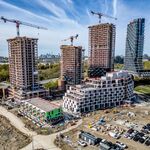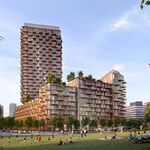Down, but not out
The mayor lost the battle on subways, not the war
BY ADRIENNE BATRA ,TORONTO SUN
Mayor Rob Ford’s administration began last week with a major win — settling a contract with CUPE Local 416 that, by all accounts, both sides can live with. A walk-out/lock-out was averted.
But the celebration was short-lived. Lurking in the shadows was the albatross of competing public transit plans.
No one could argue with the mayor’s mandate to build subways — that had been decided in the 2010 municipal election.
At issue was the Scarborough-Eglinton Crosstown LRT and whether a portion of it would be built above ground. (Some people have incorrectly confused antiquated streetcars, which operate in downtown Toronto, with what will be operating on the Crosstown. Also, it’s NOT a subway.)
Council’s left-wing completely hijacked TTC Chair Karen Stintz’s compromise transit plan, although she refused to even utter the words “Transit City” that the left wanted to revive from David Miller’s time as mayor.
The fact Ford lost the council vote on subways is reminiscent of other major slip ups his administration has had because of an unwillingness to compromise.
For her part, Stintz insisted she had a sign-off from Coun. Doug Ford on her compromise plan.
While there’s no reason to disbelieve her, why didn’t she wait to get a green light from the mayor, instead of his surrogate?
Why didn’t she first talk to her fellow TTC commissioners about what she was working on, or her concerns? (Her team argues they tried and failed to do that at the last TTC Commission meeting).
What’s certain is the public transit file has been fumbled since the beginning.
The administration could have easily gotten 23 votes at council back in March of 2011 when the new memorandum of understanding was signed with the province, which would have rightly buried the entire Eglinton line. But they sat on it.
On this point, Stintz had been raising concerns about the Sheppard subway funding and the cost of putting the whole Eglinton line underground for quite some time.
For those in the administration to say now they were caught off guard by her actions is disingenuous.
It’s troubling Ford’s team couldn’t work this out before it became a covert operation to get the necessary signatures for a special council meeting to overturn Ford’s transit plan.
(I’m told no copies of the paperwork were ever left behind with “lefty” councillors because they weren’t considered trustworthy).
What had some middle-of-the-road councillors convinced of the merits of a compromise was the potential “left over” provincial money that could then be allocated to the Sheppard subway to fulfill Ford’s election promise.
The province said nearly $650 million could be shifted to that project and by doing so, over $300 million for transit would be unlocked from the federal government.
But let’s be clear — there is no guarantee and the Dalton McGuinty government isn’t exactly known for its accounting abilities.
There may be no money left over after completion of the Crosstown project. Governments rarely bring in large infrastructure projects on time or under budget. (See the St. Clair streetcar right-of-way.)
Many of Ford’s critics have described last week’s transit vote as his biggest loss and the beginning of the end for him.
Not so. An important point his foes, and supporters, should not forget is that no one does retail politics better than Rob Ford.
This may be a point of derision among some at city hall, including civil servants who get frustrated with Ford’s, “I will come to your front door” approach. No matter.
Many residents call Ford (directly on his cellphone, of course) when they can’t get any action on a problem from their own councillor.
People love this about Ford. Even when he attends an event in an opposing councillor’s ward, Ford is greeted like a rock star, often leaving his press gallery critics scratching their heads.
His ground game is second to none. It’s one of the main reasons he won the election and why you saw pictures of him in the Toronto Sun riding the subway at midnight.
Following the transit vote, the twitterverse was abuzz with Ford supporters and detractors, but some astute political observers pointed out all it had really done was hand him his platform for reelection in 2014.
Since Ford can’t fire Stintz as TTC chair — only council can, and that’s a vote he will lose — sources say the TTC’s top executive, Gary Webster, may lose his job.
That too, would have to come to a vote, but only at the TTC Commission.
So the transit story isn’t over. It’s only beginning.




